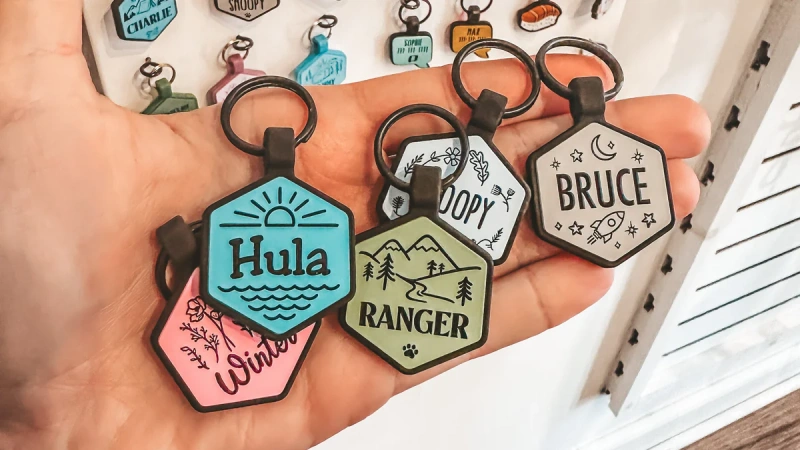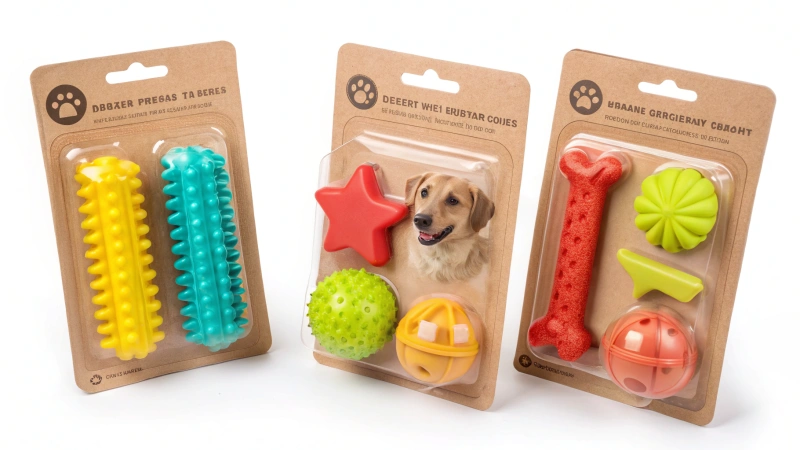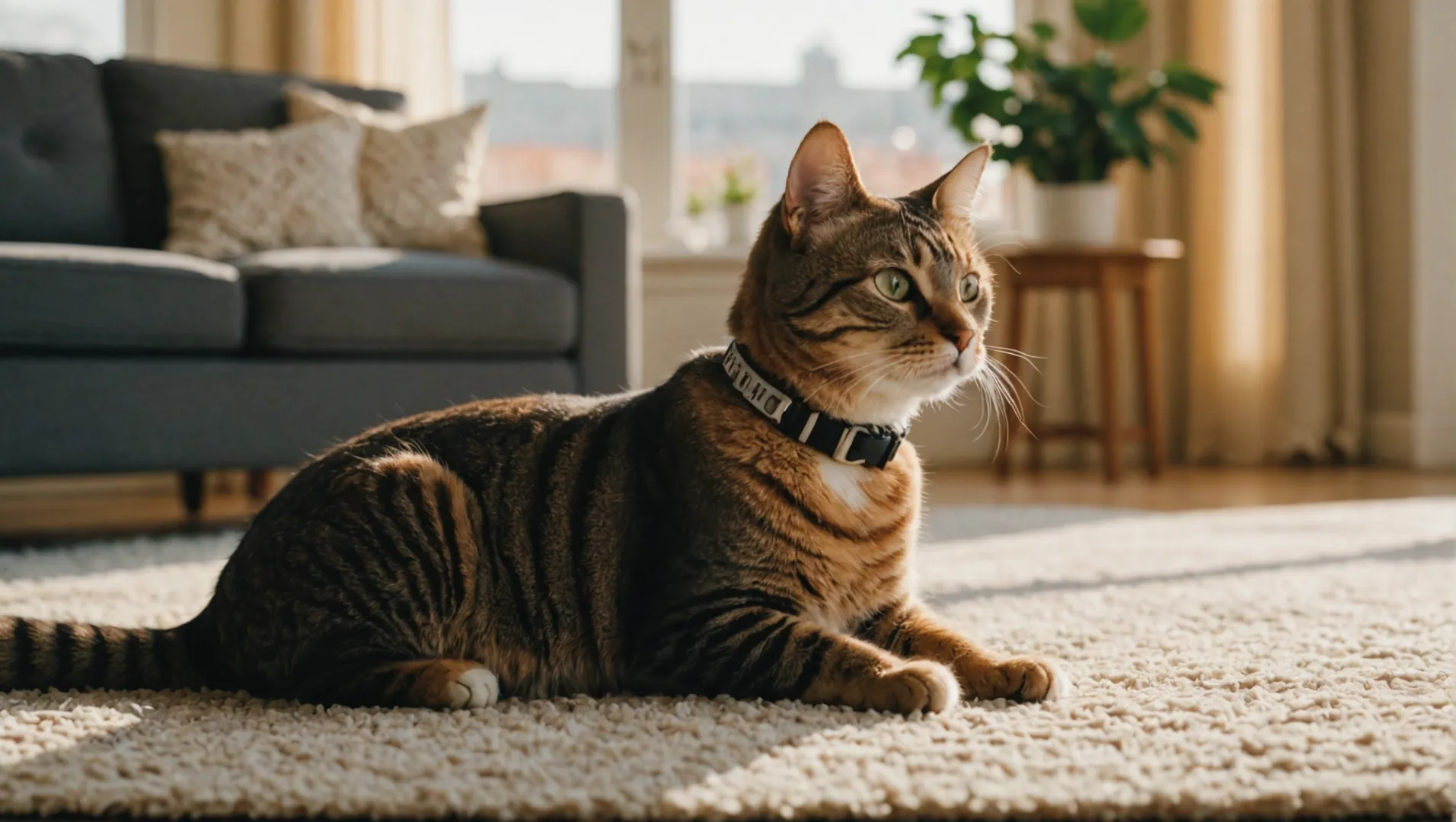
When I first got my cat, I wondered if I could just use an old dog collar I had lying around. It seemed like a simple solution, but then I started to dig deeper…
It’s generally unsafe for cats to wear dog collars due to differences in safety features and anatomical fit. Cat collars often have breakaway clasps to prevent choking, which are typically absent in dog collars.
But there’s so much more to consider! Let’s dive into the crucial differences between collars designed for cats and those made for dogs.
Cats should wear dog collars for safety.False
Dog collars lack breakaway features, posing choking risks for cats.
Why Do Cats Need Special Collars?
Cat collars aren’t just accessories; they’re vital safety tools that differ from dog collars in crucial ways. Understanding these differences can prevent accidents and ensure your cat’s comfort.
Cats require special collars because they are designed with breakaway features for safety and tailored fit for comfort. Unlike dog collars, cat collars help prevent choking and injuries if snagged.
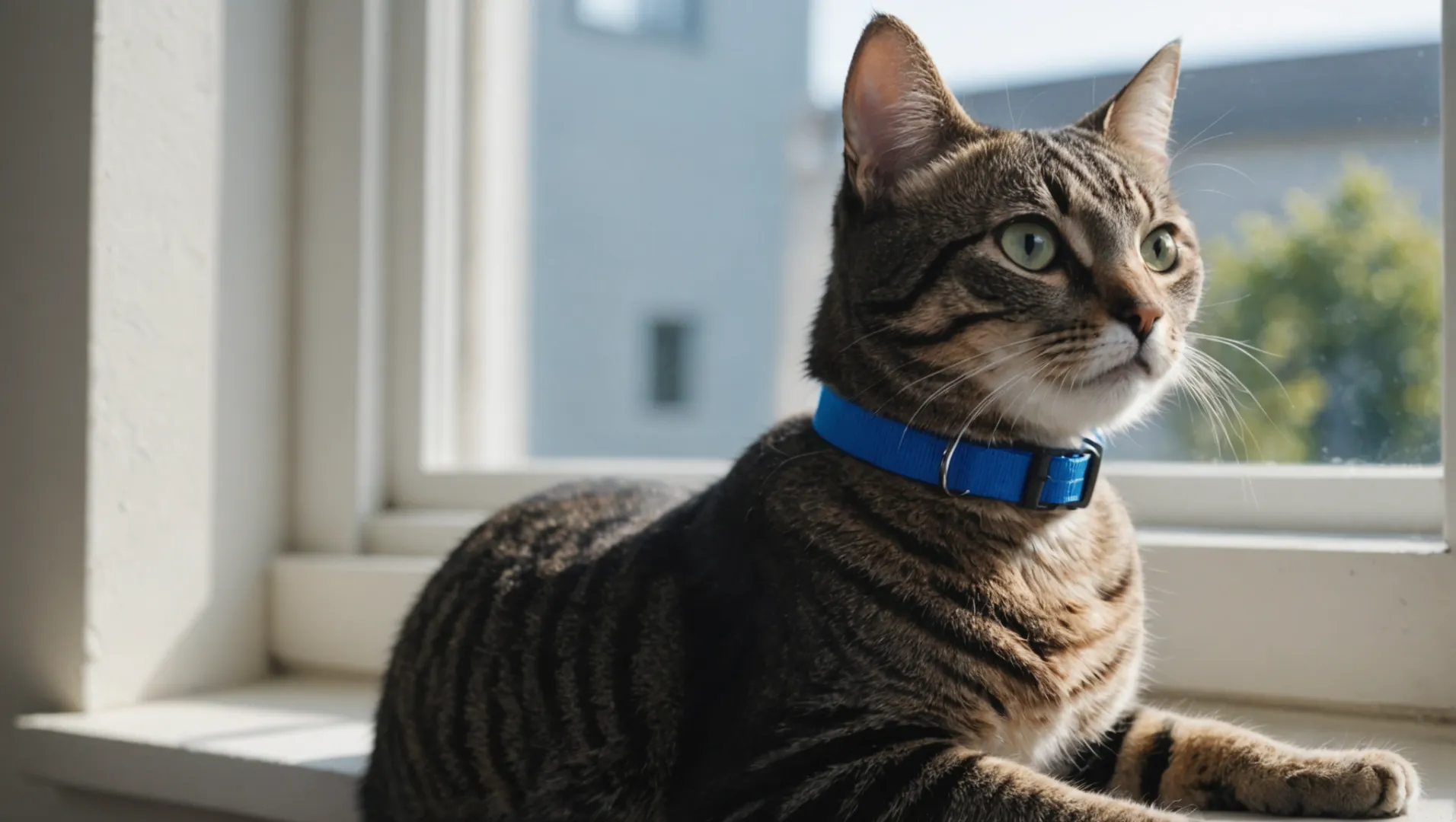
Understanding the Need for Breakaway Features
Cats are natural climbers and explorers, often venturing into tight spaces where they could easily get snagged. Breakaway collars1 are essential as they have a safety mechanism that releases when pulled with a certain amount of force, preventing choking or strangulation.
Most dog collars lack this feature, making them unsuitable for cats who might find themselves in precarious situations. A breakaway collar allows a cat to free itself if it gets caught, drastically reducing the risk of injury.
The Importance of Fit and Comfort
Cats have slender, delicate necks, differing significantly from the robust necks of most dogs. A collar that fits a dog perfectly may be too loose or too tight on a cat, leading to potential safety hazards or discomfort.
To ensure a proper fit, select a collar that allows for one to two fingers to slide easily underneath it. This ensures the collar is neither too tight to cause discomfort nor too loose to slip off easily.
| Feature | Cat Collar | Dog Collar |
|---|---|---|
| Breakaway Clasp | Yes | No |
| Adjustable Fit | Essential | Varies |
Why Material Matters
Choosing the right material is crucial for your cat’s comfort and skin health. Lightweight materials2 like nylon or soft leather are ideal as they minimize irritation and allow cats to move freely.
Heavy or rough materials can cause friction burns or irritate your cat’s skin, leading to discomfort and possible skin infections.
Identifying Your Cat’s Needs
Each cat is unique, with different personalities and lifestyles. Some cats may benefit from reflective collars if they tend to roam outdoors, while others might need collars with ID tags if they are prone to exploring far from home.
Consider your cat’s habits and environment when choosing a collar. This will ensure their safety and your peace of mind, knowing they’re easily identifiable if they wander off.
Ultimately, special collars designed for cats are not just about style or appearance but are critical tools for their safety and well-being. With the right collar, you can let your feline friend explore with confidence, knowing they are secure.
Cat collars are designed with breakaway features.True
Breakaway features prevent choking by releasing under pressure.
Dog collars are suitable for cats due to their design.False
Dog collars lack breakaway features, posing a choking risk.
What Are the Risks of Using a Dog Collar on Cats?
While collars might seem universal, cats face unique dangers when wearing dog collars. Let’s explore why using a dog collar on your feline friend can be risky.
Using a dog collar on a cat poses risks like choking, injury from snagging, and discomfort due to improper fit. Cat collars are specifically designed with breakaway features for safety, which dog collars typically lack.
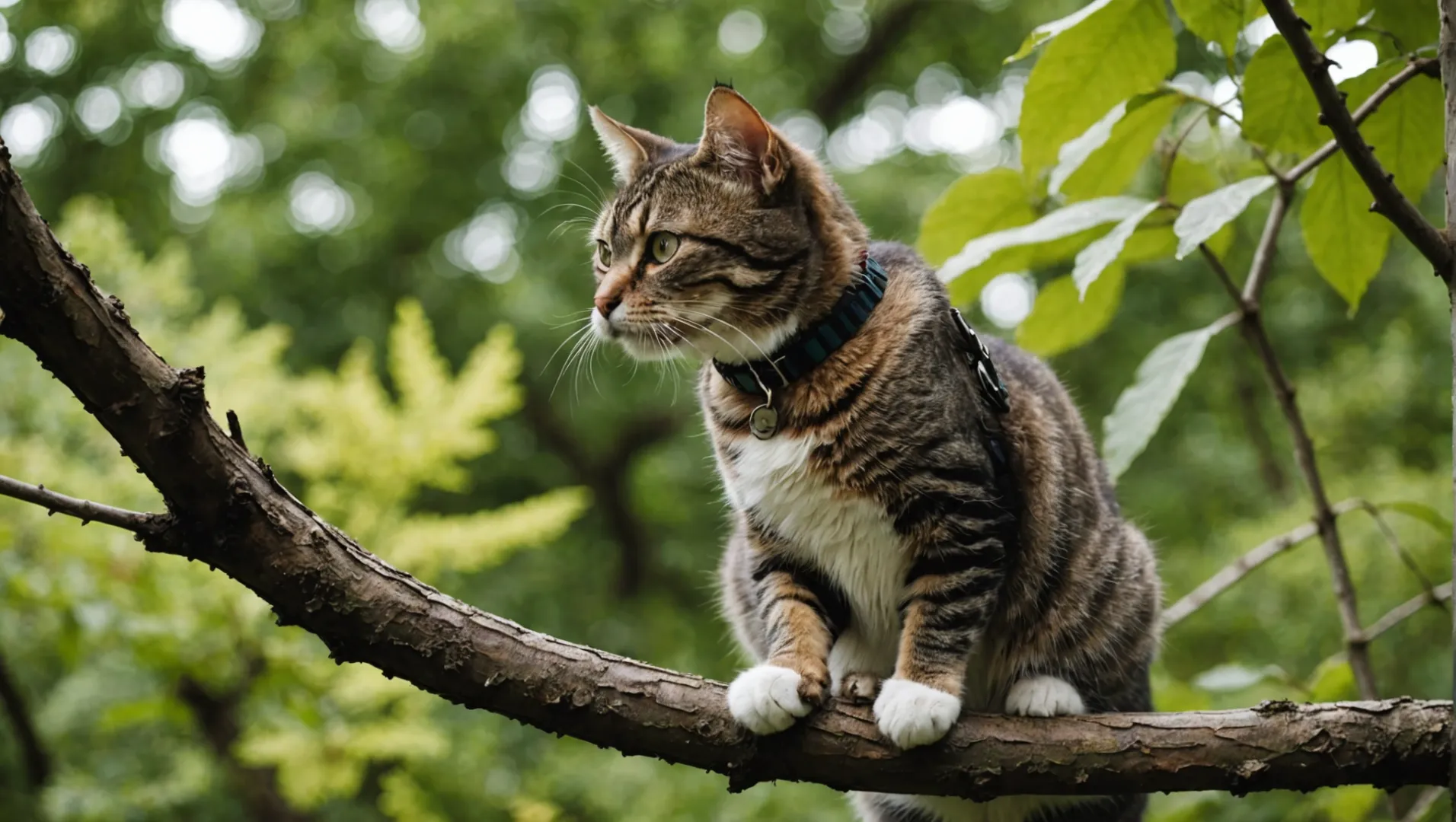
Anatomical Differences
Cats and dogs have distinct anatomical structures, particularly around the neck. A cat’s neck is more slender and flexible compared to most dogs. Dog collars, generally designed for sturdier necks, may not fit securely or comfortably on cats. This mismatch can lead to choking hazards3 or the collar slipping off.
Lack of Safety Features
Most dog collars do not include breakaway clasps. These are essential for cats as they allow the collar to release if it gets caught on something, preventing strangulation or injury. In contrast, a non-breakaway dog collar can become a deadly trap if your cat gets entangled.
| Feature | Dog Collar | Cat Collar |
|---|---|---|
| Breakaway Clasp | No | Yes |
| Lightweight Fit | Not always | Typically yes |
| Adjustable Size | Often | Always |
Risk of Injury from Snagging
Cats are agile climbers and explorers, often squeezing into tight spaces or darting through dense foliage. A rigid dog collar can easily snag on branches or furniture, putting your cat at risk of injury.
Improper Fit and Comfort
Dog collars are usually bulkier and may not adjust well for a cat’s smaller neck. This improper fit can cause discomfort or even physical harm if the collar is too tight or loose. A well-fitted cat collar should allow one to two fingers to slide underneath it comfortably.
Increased Escape Risks
Cats are notorious for their ability to slip out of collars if they are not properly secured. Without the right fit and safety features, a dog collar increases the risk of your cat escaping outdoors or getting lost.
Dog collars lack breakaway safety features for cats.True
Dog collars usually do not have breakaway clasps, unlike cat collars.
Cats and dogs have similar neck structures.False
Cats have more slender and flexible necks compared to dogs.
How to Choose the Right Collar for Your Cat?
Picking the perfect collar for your cat is essential to ensure their safety and comfort. Here’s how to make the right choice.
Choosing the right collar for your cat involves considering safety features, material, adjustability, and identification tags. Always opt for breakaway collars to prevent accidents and ensure a comfortable fit that allows one to two fingers underneath.
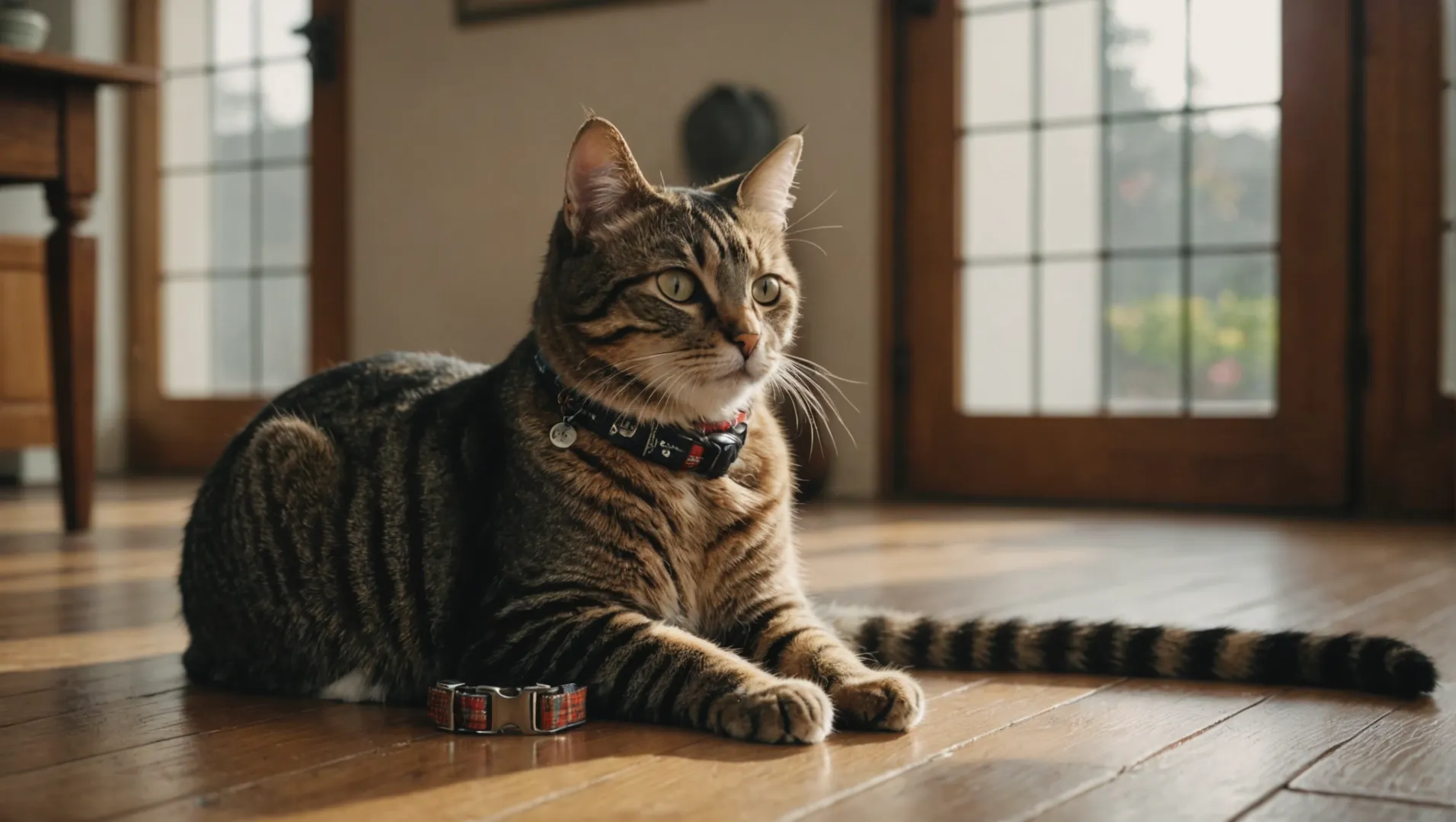
Safety Comes First
When choosing a collar for your cat, the primary consideration should be safety. A breakaway collar4 is essential as it prevents choking or injury by releasing under pressure if your cat gets caught on something. This feature is particularly crucial for outdoor cats who might explore areas with potential hazards like branches or fences.
Material Matters
The material of the collar plays a significant role in your cat’s comfort. Opt for lightweight materials such as nylon or soft fabric to minimize skin irritation. Avoid heavy or rough materials that might chafe or weigh down your cat’s neck.
Perfect Fit: Not Too Tight, Not Too Loose
Achieving the perfect fit is vital. A collar that is too tight can cause discomfort or choking, while one that is too loose may easily slip off. To ensure a proper fit, you should be able to slide one to two fingers comfortably underneath the collar. This balance prevents both injury and accidental loss.
Importance of ID Tags
Even if your cat is microchipped, having an ID tag on their collar can be invaluable. It provides immediate contact information in case your cat wanders off. Consider including your phone number and any pertinent medical needs.
| Feature | Importance | Recommendation |
|---|---|---|
| Breakaway | High | Prevents choking |
| Material | Medium | Lightweight nylon |
| Adjustability | High | Allows growth |
| ID Tags | High | Immediate contact |
Adjustable Collars: Growing with Your Cat
Cats grow quickly, especially kittens, so an adjustable collar is essential. This allows the collar to grow with your cat, maintaining a secure and comfortable fit over time. Regularly check the fit as your cat grows or gains weight.
By taking these factors into account, you can select a collar that ensures your feline friend’s safety while providing them with comfort and freedom of movement.
Breakaway collars prevent cat choking.True
Breakaway collars release under pressure, preventing choking hazards.
Heavy collars are best for cats.False
Lightweight materials minimize irritation and discomfort for cats.
Can Training Help Cats Adjust to Wearing Collars?
Training can ease a cat’s transition to wearing a collar, enhancing safety and comfort.
Yes, training can help cats adjust to wearing collars by introducing them gradually and using positive reinforcement techniques to create a comfortable experience.
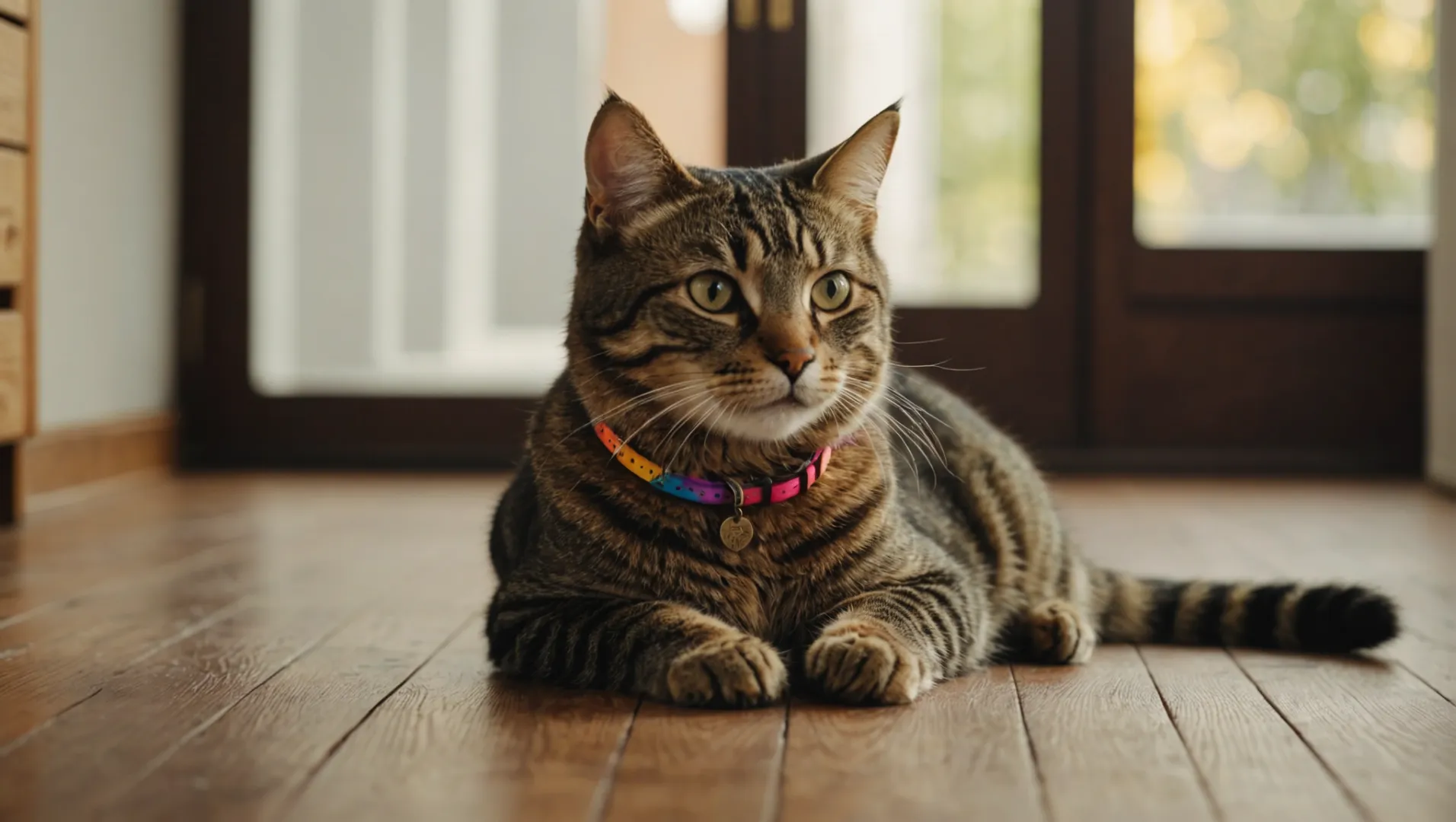
Understanding the Cat’s Perspective
Cats are notoriously independent creatures, and introducing any new accessory can be met with resistance. Unlike dogs, who might tolerate change more readily, cats require a gentle approach. Training a cat to wear a collar involves patience and understanding of their natural instincts.
Gradual Introduction
Begin by letting your cat sniff and explore the collar. Leave it near their food bowl or bed so they associate it with positive environments. This step helps them become familiar with the collar as part of their daily surroundings.
Positive Reinforcement Techniques
Reward-based training is particularly effective for felines. Offer treats, affection, or playtime whenever your cat interacts positively with the collar. This method reinforces good behavior and helps them associate the collar with positive experiences.
Short, Consistent Sessions
Start with short sessions where the collar is gently placed around your cat’s neck. Initially, just let them wear it for a few minutes while distracting them with toys or treats. Gradually increase the duration over several days. This incremental approach can ease your cat into accepting the collar without overwhelming them.
Observing and Adapting
Keep an eye on your cat’s behavior throughout the training process. If they show signs of stress or discomfort, remove the collar and try again later. Each cat is unique, and some may require more time to adjust than others. Understanding feline behavior5 can provide additional insights into how best to tailor the training process.
Final Thoughts
Remember that patience is key. By understanding your cat’s needs and applying these training techniques, you can help your feline friend become comfortable with their collar, ensuring both their safety and your peace of mind.
Cats can be trained to wear collars using treats.True
Positive reinforcement with treats helps cats associate collars positively.
All cats naturally accept collars without training.False
Cats require gradual introduction and reinforcement to accept collars.
Conclusion
Choosing the right collar is essential for your cat’s safety. Prioritize breakaway designs and proper fits to prevent accidents.
-
Explore how breakaway collars prevent strangulation hazards for cats.: If you are going to use any collar, definitely use the breakaway. At the very least, they are supposed to break apart if any cats get stuck. ↩
-
Discover ideal materials that ensure comfort and prevent irritation.: Whether you choose leather, cotton, velvet, or silicone, ensure the collar includes a breakaway feature for safety and is adjustable for a perfect fit. ↩
-
Breakaway collars prevent choking if cats get caught.: If you are going to use any collar, definitely use the breakaway. At the very least, they are supposed to break apart if any cats get stuck. ↩
-
Learn why breakaway collars are crucial for cat safety.: If you are going to use any collar, definitely use the breakaway. At the very least, they are supposed to break apart if any cats get stuck. ↩
-
Learn how feline behavior affects collar acceptance for smoother transitions.: You can better understand your furry friend by paying attention to their vocalizations, body postures and daily routines. ↩


